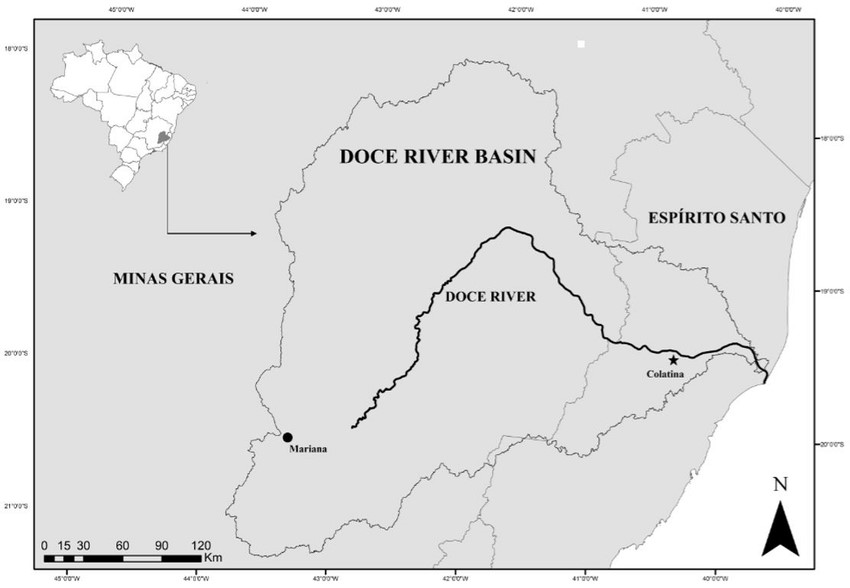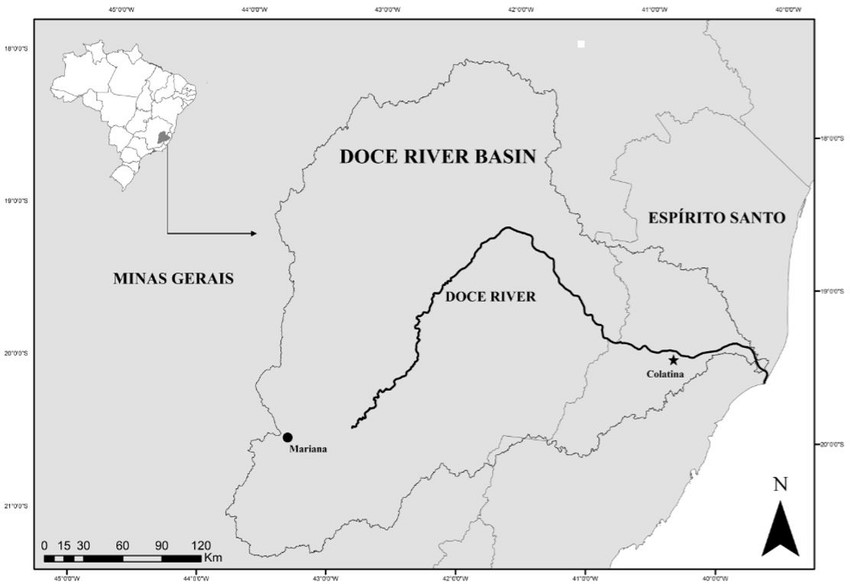This impact story was originally published by the HCV Network here.
In 2020, the HCV Network worked with Lactec, Nativa Meio Ambiente and Proforest to conduct an HCV Screening in the Rio Doce watershed. The objective of the screening was to identify and map all potential HCVs and the threats they face to set priorities and recommendations on mitigating the social and environmental damages of the mining collapse and providing restoration recommendations.
About the landscape

The Rio Doce basin is home to over 3 million people who depend on the river for water, food, livelihoods, leisure and more. Many indigenous populations inhabit this watershed, and they are closely linked and dependent on the Doce River as their main water source.
Atlantic forest makes up 98% of the watershed area which lies within the limits of two global biodiversity hotspots. Atlantic forested areas provide important ecosystem services, including clean air and climate regulation, soil protection, pollination, food, medicine, and drinking water.
In 2015, disaster struck near the town of Mariana in Brazil when a mining tailings dam collapsed spilling water, mud and debris 650 km down the Rio Doce, ultimately reaching the Atlantic Ocean. It was not just natural runoff that affected the river and marine area – the tailings were from iron mining, so many chemical pollutants reached the watershed and damaged the length of the Doce River course, as well as a large marine area.
In the subsequent years Lactec, a private research institute that provides both technological developments and specialized services, began working to assess the environmental damages caused by the dam failure. Lactec, alongside other institutions, worked as technical experts for the Federal Prosecution Service in the assessment of socio-environmental damages.
All material published here are part of the Socio-environmental Diagnosis of the Damages Resulting from the Rupture of the Fundão Dam, in the Doce River basin. Its technical products can be accessed here.
Objectives
In 2020, the HCV Network worked with Lactec, Nativa Meio Ambiente and Proforest to conduct an HCV Screening in the Rio Doce watershed, covering an area of 86,715 km2. The objective of the screening was to identify and map all potential HCVs and the threats they face to set priorities and recommendations on mitigating the social and environmental damages of the mining collapse and providing restoration recommendations.
Many culturally important sites were damaged (e.g., the spiritual sites for the Krenak people), as well as a whole village, Bento Rodrigues, that was engulfed. The population of Bento Rodrigues will be transferred to a site, Nova Bento, away from its original geographical position. The relocation of the village will cause several cultural manifestations to be lost, especially religious festivities. There are different types of recovery or compensation for both these scenarios, and the HCV screening aims to aid in the interpretation of these differences.
The work involved
There was a great deal of information on the environmental characteristics of the area from studies, interviews, articles, reports, government statistics, and spatial archives. The screening tool helped to sift through the large amount of information and choose relevant indicators for important values (e.g., biodiversity, rare habitats, ecosystem services).
The screening team developed a set of indicators for HCVs and produced HCV probability maps. Afterwards information gaps were identified, and a threats analysis was performed. The screening results show where social and biodiversity values are concentrated throughout the watershed. The HCV screening maps can be used to justify and prioritize where ecosystem restoration actions should begin, and why these sites may result in more effective recovery of biodiversity and social values.
The work formed part of a series of data used to help decision-makers set priorities and recommendations towards restoring and mitigating or compensating environmental and social damages.
What’s next?
Following the HCV screening and mapping assessments, the following points were highlighted as issues to consider on future management actions:
- Strengthening of protected areas along the Doce River are imperative to enable effective territorial management of natural resources, especially for those most vulnerable to environmental degradation.
- The restoration of riparian forests along the Doce River and its tributaries is essential to reduce siltation and maintain water quality, as well as to avoid new contaminants from reaching the river course in the future, since a huge amount of tailings were deposited in the soil.
- Technical assistance should be offered to promote sustainable agricultural practices and alternatives to fishing (since fish and other aquatic resources are contaminated and can cause health issues when consumed), and to reduce the use of fire that can cause serious damage to native vegetation.
- Revitalise cultural spaces that have suffered damage so that, over time, it is feasible to strengthen community networks.
- It is necessary to have an improved understanding of the relationship between local communities with natural resources along the Doce River that could participate in the evaluation of the probability of HCV 5 (sociocultural value: community needs) presence.
Governance of this issue is the responsibility of a Committee, which guides “Fundação Renova” (created by Samarco, the mining company that owns the ruptured dam) to perform management activities in the field.
To learn more about this case study, HCV screening and learning opportunities, or to collaborate with the HCVN Secretariat, contact secretariat@hcvnetwork.org
The authors would like to thank the Instituto de Tecnologia para o Desenvolvimento (LACTEC) for support and the Federal Prosecution Service (Ministério Público Federal – MPF) and State Prosecution Services of Minas Gerais and Espírito Santo (Ministério Público do Estado de Minas Gerais – MPMG e Ministério Público do Estado do Espírito Santo – MPES) for the opportunity to work in the Samarco Case and contribute scientifically to a project of this magnitude, as well as for the continuous support.
